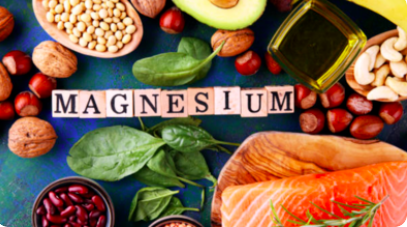Health
What Is The Cause Of Monkeypox?

What Is The Cause Of Monkeypox?
If you’re curious about the disease’s causes, read this article. We’ll cover the transmission process via droplet respiratory particles, symptoms, and prevention.
In addition, we’ll look at how to prevent infection during pregnancy. As more information becomes available, we’ll update this article.
In the meantime, if you suspect you may have monkeypox, contact your doctor immediately.
Transmission via droplet respiratory particles
The controversy over whether or not the transmission of monkeypox can occur via droplet respiratory particles is gaining steam on social media.
The debate is reminiscent of the COVID-19 pandemic controversy, and the World Health Organization’s hesitation to acknowledge the airborne transmission of SARS-CoV-2 has led to several misinformed statements.
While the CDC’s statement may not be entirely false, its use of the word “droplet” is misleading and contradictory.
In 1958, researchers found that monkeypox was transmitted to humans through contact with laboratory monkeys.
During a large outbreak in six U.S. states in 2003, the disease was linked to pet prairie dogs that came into contact with rodents.
The disease is now regarded as rare, but it’s still contagious. Because monkeypox can infect humans, it’s important to learn about its spread and how to avoid it.
Symptoms

The symptoms of monkeypox can vary from person to person and can be particularly severe in children.
The disease usually runs its course in two to four weeks, but it can be very serious, especially if you have a low immune system.
The sores can be large and clustered together, causing you to lose large sections of skin at once. In some areas of Africa, monkeypox can even cause death, especially in children.
While most people who contract monkeypox will not have any symptoms during the early stages, they are likely to develop a painful and itchy rash after about two weeks of infection.
The sores will appear in stages before healing and are often shaped like pimples. They may appear on the face, arms, chest, or genitals, and they may be limited to a specific area.
highly contagious viral infection

Monkeypox is a highly contagious viral infection that can be passed from mother to child through close contact.
It is spread by respiratory secretions. The CDC recommends against skin-to-skin contact.
If you think you may be infected, wash your hands often and avoid touching other people.
Keep your distance from others, especially when handling bedding, towels, and clothing.
If you or your partner has the disease, get help as soon as possible. It is uncommon for monkeypox to infect pregnant women, but it can be dangerous if you’re expecting.
The virus can pass to your unborn child through your placenta. Fortunately, in this case, monkeypox did not affect the fetus and the mother and baby are healthy.
Although this infection is not common during pregnancy, pregnant women should seek medical care for monkeypox if they’re pregnant.
Prevention

Fortunately, there are many ways to prevent monkeypox from spreading to humans.
It can be transmitted through contact with primates and rodents, and through infected bedding, clothing, and other materials.
In addition, it can be spread by close social contact with infected people.
Therefore, the prevention of monkeypox is a must for those who are in the vicinity of infected people.
If you think you or someone in your household has the disease, contact your health care provider or public health center to get tested.
The most effective ways of preventing monkeypox infection include avoiding prolonged contact with infected people.
Contact with unprotected animals should be avoided, as must eating animal parts.
Furthermore, foods containing animal parts must be cooked thoroughly before consumption.
In addition, some countries have banned the import of non-human primates and rodents, which can harbor monkeypox.
Furthermore, animals in captivity with monkeypox should be separated from other animals and immediately placed in quarantine.
Animals with the disease must be handled with standard precautions and observed for 30 days to ensure that they are free of the infection
FAQs
What type of virus causes monkeypox?
How long does it take to get rid of monkeypox?
How long does the monkeypox virus last?
How long does it take for monkeypox to show up?
Conclusion
Tell us anything you know about The Causes Of Monkeypox
Remember your health is wealth
Please, let us know your thoughts in the comments section.
Health
7 Fascinating Facts About Magnesium You Probably Didn’t Know

7 Fascinating Facts About Magnesium You Probably Didn’t Know
Magnesium is one of the most essential minerals for our health, yet many people are unaware of its significance.
This vital nutrient plays a crucial role in numerous bodily functions, from energy production to maintaining a healthy heart.
In this article, we will delve into seven intriguing facts about magnesium that may surprise you and help you appreciate its importance in your daily life.
What is Magnesium?
Magnesium is a naturally occurring mineral found in various foods and is vital for human health.
It is the fourth most abundant mineral in the body and is involved in over 300 biochemical reactions.
Magnesium contributes to nerve function, muscle contraction, blood sugar control, and blood pressure regulation.
It can be obtained from various dietary sources, including leafy greens, nuts, seeds, whole grains, and legumes.
1. Magnesium is Involved in Energy Production
Did you know that magnesium is essential for converting food into energy? This mineral plays a critical role in the activation of ATP (adenosine triphosphate), the energy currency of our cells.
Without sufficient magnesium, your body struggles to produce energy effectively, which can lead to feelings of fatigue and weakness.
How Does It Work?
ATP production occurs in the mitochondria, often referred to as the powerhouse of the cell.
Magnesium helps activate enzymes involved in this energy production process, ensuring that your body has enough energy to perform daily activities.
2. A Key Player in Bone Health
Magnesium is vital for maintaining strong and healthy bones. Approximately 60% of the magnesium in your body is stored in your bones.
It contributes to bone density and strength by regulating calcium levels in the body, which is crucial for bone formation.
The Calcium Connection
Calcium is often touted as the primary mineral for bone health, but magnesium plays an equally important role.
An imbalance of these two minerals can lead to bone-related issues such as osteoporosis.
Ensuring adequate magnesium intake is essential for maintaining optimal bone health.
3. Supports Heart Health
Magnesium is a crucial mineral for cardiovascular health. It helps maintain normal heart rhythms and can reduce the risk of heart disease.
Adequate magnesium levels are associated with lower blood pressure and reduced risk of heart attacks.
Regulation of Blood Pressure
Magnesium helps relax blood vessels, which can lead to lower blood pressure.
Studies have shown that individuals with higher magnesium intake tend to have better cardiovascular health. Including magnesium-rich foods in your diet can be an effective strategy for supporting heart health.
4. Magnesium and Mental Health
Emerging research suggests a strong link between magnesium levels and mental health.
Magnesium plays a role in regulating neurotransmitters, which are essential for mood stabilization.
Low magnesium levels have been associated with an increased risk of depression and anxiety.
Cognitive Function
Magnesium may also enhance cognitive function. Studies have indicated that adequate magnesium intake can improve memory and learning abilities.
This mineral is essential for brain health, making it vital for overall mental well-being.
5. Magnesium Deficiency is Common
Despite its importance, magnesium deficiency is surprisingly common.
Factors such as poor diet, chronic stress, and certain medical conditions can lead to low magnesium levels.
Symptoms of magnesium deficiency can include muscle cramps, fatigue, and irritability.
Risk Factors for Deficiency
Certain populations are at a higher risk for magnesium deficiency, including the elderly, those with gastrointestinal diseases, and individuals who consume a diet low in whole foods.
It’s essential to recognize the signs of deficiency and consider increasing your magnesium intake through diet or supplements if necessary.
6. Natural Relaxant
Magnesium is often referred to as a natural relaxant due to its calming effects on the nervous system.
It helps regulate cortisol levels (the stress hormone) and promotes relaxation, making it beneficial for those dealing with anxiety and stress.
Improving Sleep Quality
In addition to its relaxing properties, magnesium can improve sleep quality.
Many people find that magnesium supplements help them fall asleep faster and stay asleep longer, making it a popular choice for those struggling with insomnia.
7. Magnesium in Sports Performance
Athletes and active individuals often benefit from magnesium’s role in muscle function and recovery.
Magnesium helps prevent muscle cramps and can aid in post-exercise recovery by reducing inflammation and promoting relaxation.
Enhancing Athletic Performance
Research has shown that adequate magnesium levels can enhance athletic performance.
It is involved in muscle contraction and relaxation, making it essential for peak performance during exercise.
Conclusion
Magnesium is a powerhouse mineral that plays an essential role in various bodily functions. From supporting energy production to promoting heart health and mental well-being, its importance cannot be overstated.
Ensuring adequate magnesium intake through a balanced diet rich in whole foods can significantly enhance your overall health and quality of life.
If you suspect you may be deficient in magnesium, consider consulting with a healthcare provider to assess your levels and discuss dietary changes or supplements that may be beneficial.
FAQs about Magnesium
1. What are the best dietary sources of magnesium?
The best sources of magnesium include leafy green vegetables (like spinach), nuts (especially almonds and cashews), seeds (such as pumpkin seeds), whole grains (like brown rice and quinoa), and legumes (like beans and lentils).
2. How much magnesium do I need daily?
The recommended daily intake of magnesium varies by age and gender. Generally, adult men should aim for about 400-420 mg per day, while adult women should aim for about 310-320 mg.
3. Can I take magnesium supplements?
Yes, magnesium supplements are available and can be beneficial, especially for individuals who may not get enough from their diet. However, it’s essential to consult with a healthcare provider before starting any supplement regimen.
4. What are the symptoms of magnesium deficiency?
Symptoms of magnesium deficiency can include muscle cramps, fatigue, weakness, irritability, and irregular heart rhythms. If you experience these symptoms, consult a healthcare professional.
5. Is it possible to get too much magnesium?
Yes, while magnesium from food sources is generally safe, excessive supplementation can lead to toxicity, causing symptoms like diarrhea, nausea, and abdominal cramping. Always consult a healthcare provider before increasing your magnesium intake significantly.
References:
Health
Whooping Cough: Understanding Its Resurgence and Prevention

Health
The Power of Beans: Why This Superfood is a Nutritional Treasure
-

 Trending Stories1 year ago
Trending Stories1 year agoCDC: 1 in 4 Americans Still COVID-Free by End of 2022
-

 Health5 years ago
Health5 years agoMeghan Trainor Shares Motivational New Song ‘Blink’
-

 Health6 months ago
Health6 months agoHow Do Pawpaw Seeds Support Cardiovascular Health?
-

 Health2 years ago
Health2 years agoHow Long Does Monkey Pox Last Before It Surfaces in the Body?
-

 Health3 years ago
Health3 years agoWhat Causes Swollen Body? Understanding Edema and its Triggers
-

 Health3 years ago
Health3 years agoNutrition and the Importance of a Fitness Program – 3 Things to Know
-

 Health3 years ago
Health3 years ago5 Weird Reasons Why Pimples Disappear After Marriage
-

 Health2 years ago
Health2 years agoHealth Benefits Of Pawpaw Seed? 7 Things To Know







